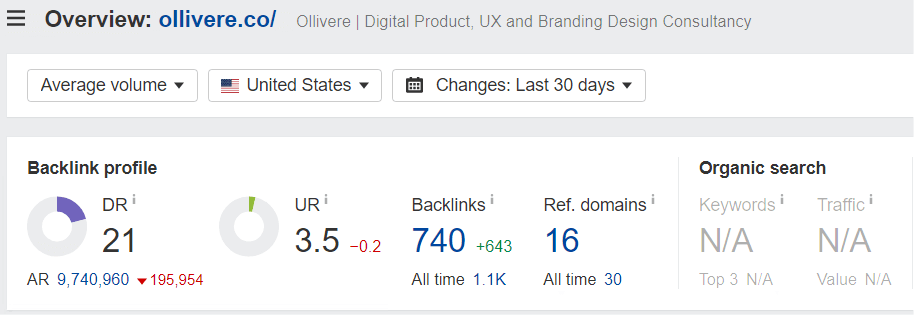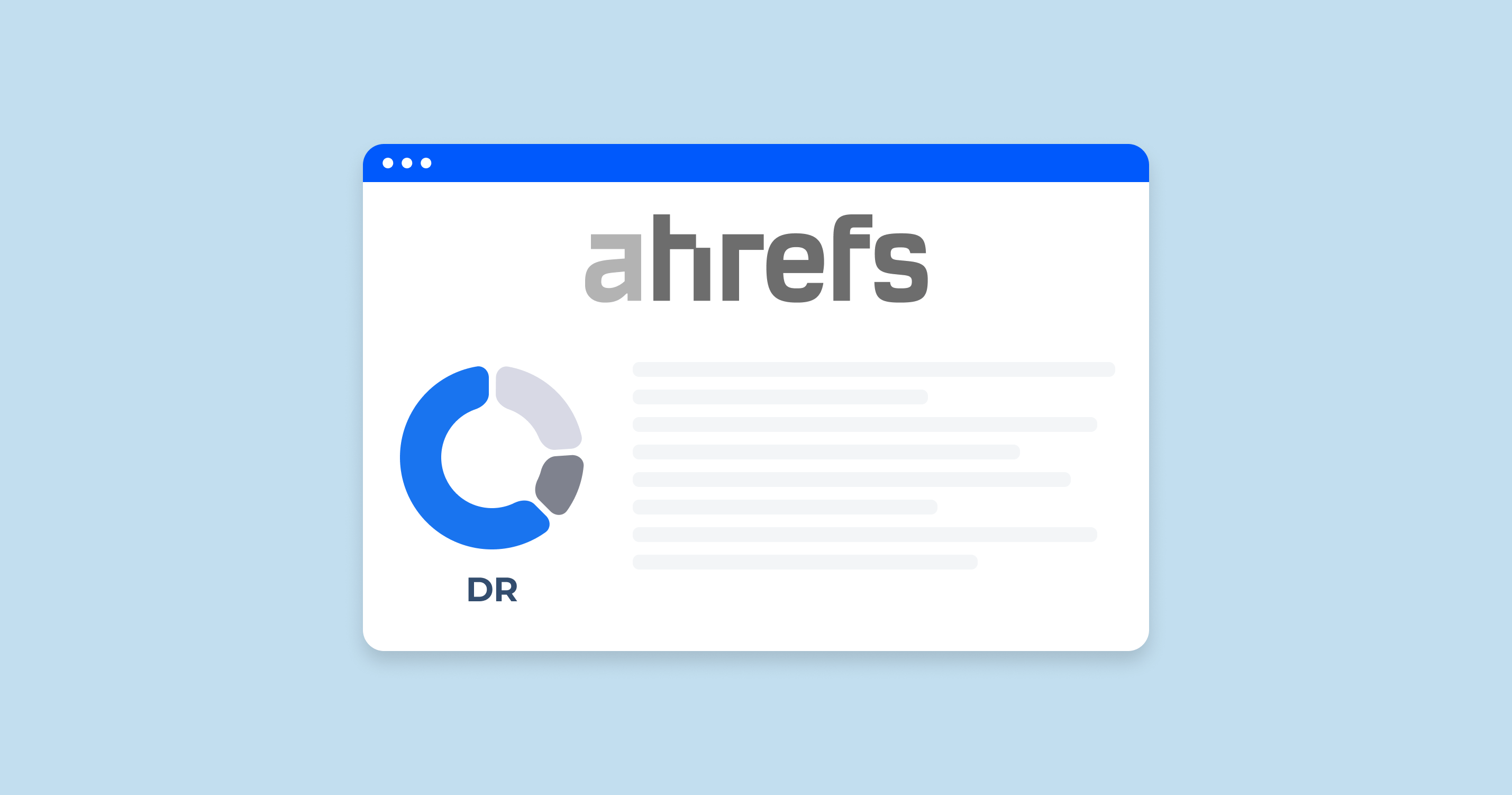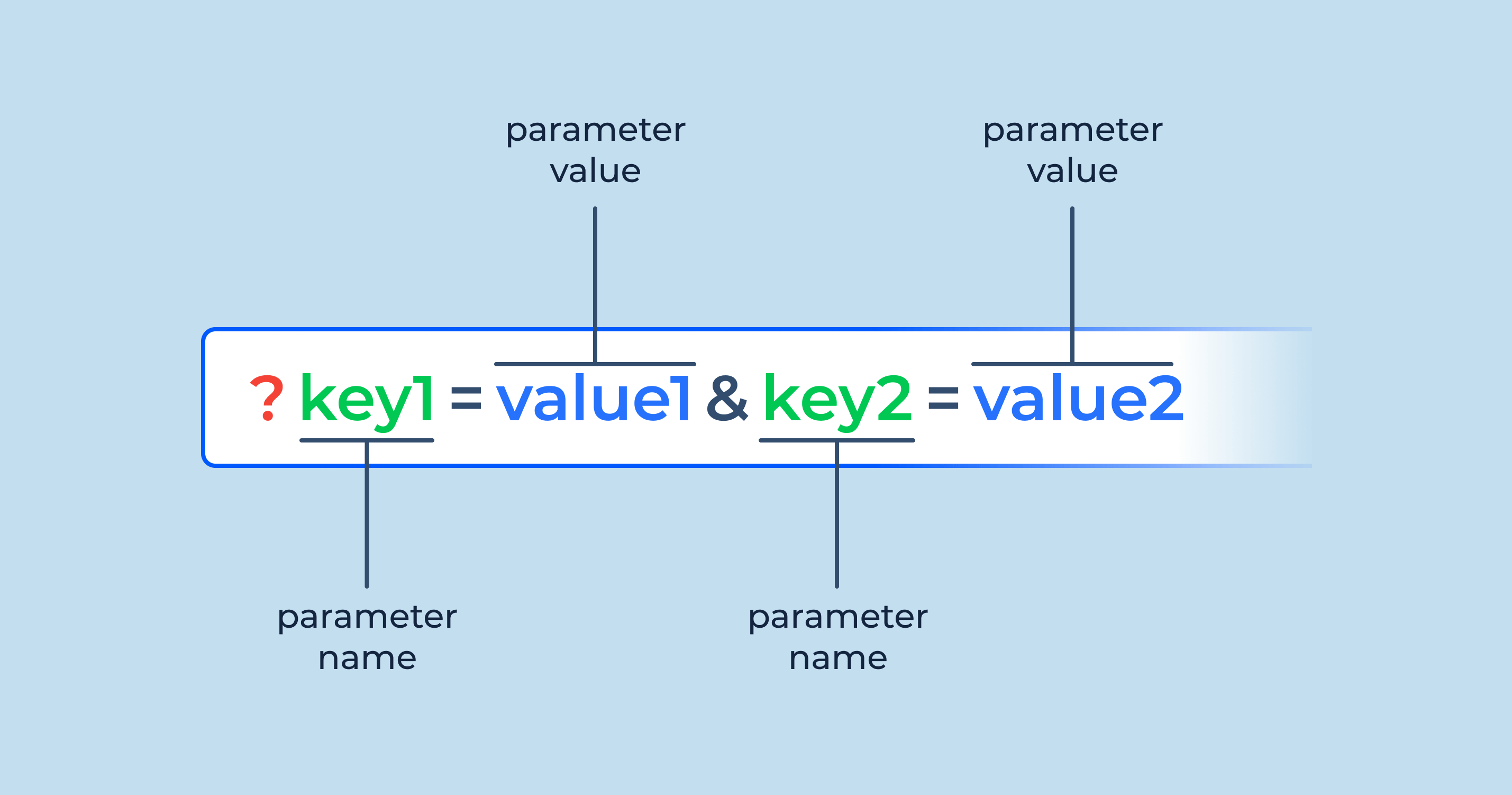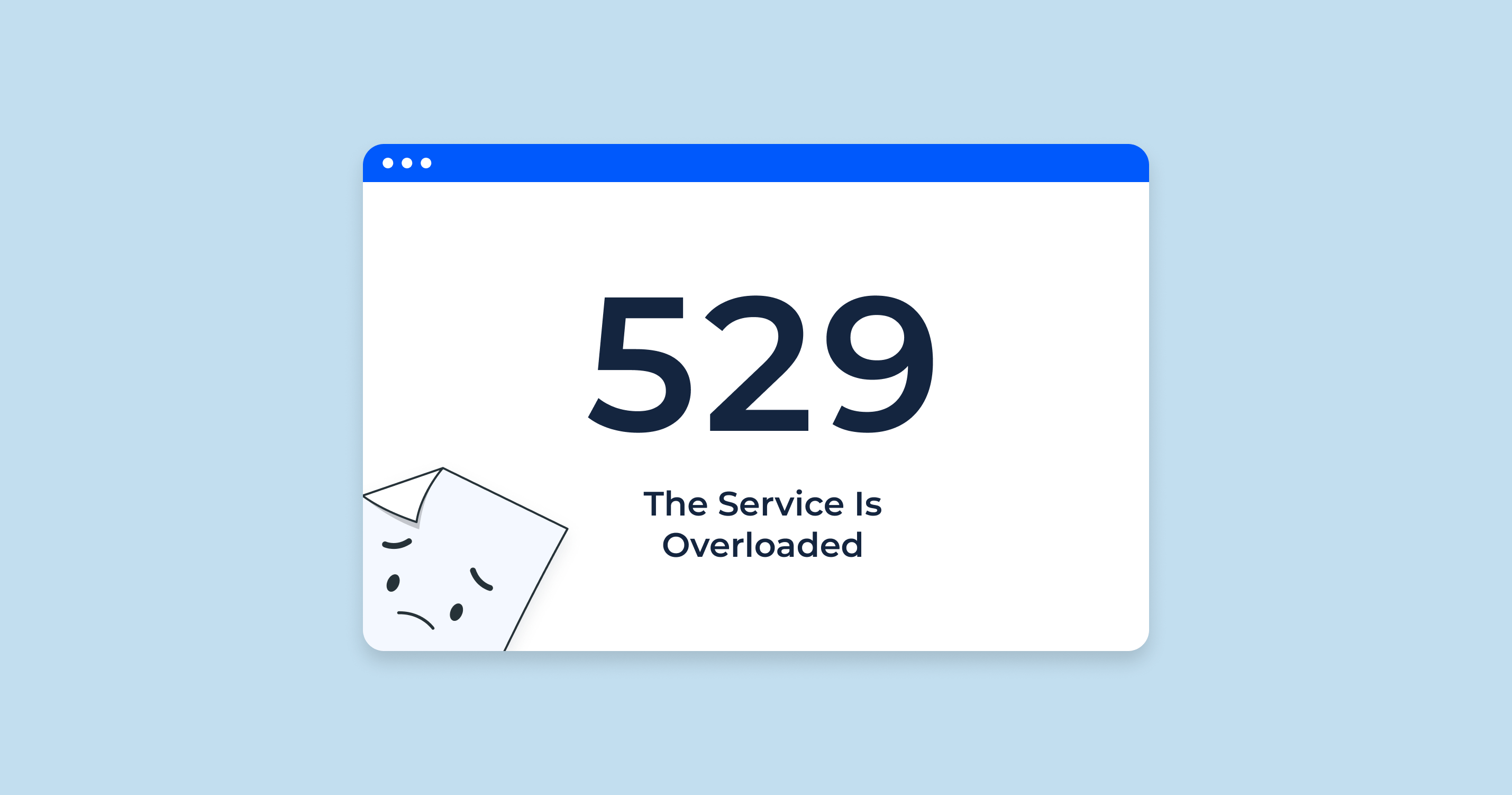What is Ahrefs Domain Rating?
Ahrefs Domain Rating (often abbreviated as DR) is a proprietary metric developed by Ahrefs, a well-known SEO tool provider. It serves as an indicator of the strength and quality of a website’s backlink profile. Here’s a detailed look into what Ahrefs Domain Rating is and why it matters:
What Does Domain Rating Measure?
Domain Rating evaluates the overall strength of a website’s backlink profile. The primary premise is straightforward: the more high-quality domains that link to your website, the higher your website’s Domain Rating will be. Ahrefs uses its vast index of backlinks to analyze and rate websites on a scale from 0 to 100, with 100 being the best possible score.

How Does Ahrefs Calculate DR?
While the exact algorithm Ahrefs uses to determine Domain Rating is proprietary, it’s known that the DR calculation takes into account:
- The number of unique domains linking to the website. Getting multiple links from the same domain won’t significantly boost your DR; it’s more about the diversity of domains that link to you.
- The “authority” of linking domains. A link from a high-DR website will typically have a more substantial impact on your DR than a link from a low-DR site.
- The quality and relevance of the linking domains. Spammy or irrelevant links might not contribute positively and can sometimes even be detrimental.
How Does DR Differ from Other Metrics?
There are other metrics in the SEO world that aim to measure domain strength or authority, like Moz’s Domain Authority (DA) or Google’s PageRank (though the latter isn’t publicly available anymore). While they all aim to evaluate a website’s authority based on its backlink profile, each metric has its proprietary calculation and might provide slightly different results. Therefore, it’s essential to be consistent in which tool or metric you’re using and not to compare apples to oranges.
Why is Domain Rating Important?
- SEO and Rankings: A higher Domain Rating can correlate with better search rankings. While DR itself isn’t a ranking factor for search engines, the high-quality backlinks that contribute to a good DR are.
- Trust and Credibility: Websites with a higher DR are often seen as more trustworthy and authoritative in their industry or niche.
- Benchmarking: DR can be used to benchmark against competitors or to gauge the progress of your SEO efforts over time.
While Domain Rating is a valuable metric, it’s essential to consider it as just one of many tools in your SEO toolbox. It doesn’t reflect on-page SEO factors, content quality, or user experience—all vital elements for website success. Always use Domain Rating in conjunction with other metrics and insights for a holistic understanding of your website’s SEO performance.
How is Domain Rating Calculated?
Ahrefs Domain Rating is a metric that provides insight into the overall strength of a website’s backlink profile. A higher DR often indicates that a website has accumulated a significant number of high-quality inbound links. But how exactly does Ahrefs determine this rating? Let’s delve deeper into the intricacies of this calculation.
The Basics of Domain Rating Calculation
At its core, the calculation of Domain Rating is based on the analysis of backlinks. Ahrefs looks at both the quantity and quality of these links. But it’s not just a simple count; various factors are taken into consideration:
- Unique Referring Domains
While the number of total backlinks a site has can be a helpful metric, what’s more impactful for DR is the number of unique domains linking to the site. For instance, if one website links to yours multiple times, it’s considered less valuable in the DR calculation than if multiple unique websites link to yours.
- Quality Over Quantity
Not all backlinks are created equal. Ahrefs takes into account the DR of the linking websites themselves. In simple terms, backlinks from higher DR sites contribute more to your own DR than those from lower DR sites. It’s akin to receiving a vote of confidence from a well-respected authority in the digital space.
- Link Authority Distribution
Another concept that Ahrefs uses is that not all pages on a high-DR site will pass the same amount of “authority.” For instance, a link to the target name from a deep page on a major news site, which itself has few backlinks, might not be as valuable as a link from a prominent page on a lesser-known site that has garnered many high-quality backlinks.
- Natural Growth
While not explicitly stated, it’s believed that Ahrefs’ algorithms are sophisticated enough to detect unnatural link-building practices, which can sometimes result in a lower DR. Hence, rapid spikes in backlink acquisition or evidence of manipulative practices can negatively impact the DR.
Recalculation and Updates
Ahrefs doesn’t have a static database; it’s continually crawling the web and updating its index. This means that DR can change over time as new links are acquired, old ones are lost, or as the link landscape of referring domains changes. Most SEO professionals notice regular fluctuations in DR due to these updates.
Understanding the Scale
DR is represented on a logarithmic scale of 0 to 100, meaning the gap between DR values of 10 and 20 is likely smaller than the gap between 70 and 80. As websites approach a DR of 100, it becomes progressively harder to move up even by a single point.
Domain Rating, while a proprietary metric, offers invaluable insights into the quality and strength of a website’s backlink profile. By understanding the nuances of how it’s calculated, webmasters and SEO professionals can better strategize their link-building efforts and prioritize high-quality, organic growth.
What is a Good Ahrefs Domain Rating Score?

Ahrefs Domain Rating (DR) is a widely used metric in the SEO industry to assess the authority and strength of a website’s backlink profile. A higher score suggests that a website has garnered backlinks from reputable sources. But what constitutes a “good” DR score? Let’s break it down:
- Relativity is Key
A “good” DR score is often relative to your industry, niche, or the specific competitors you’re up against. For instance, a niche blog might consider a DR of 30 to be excellent, while an international news website might aim for a DR above 80.
- Industry Benchmarks
Within specific industries or niches, there tend to be average DR scores. For instance, in highly competitive industries like finance or health, the top players might have DR scores upwards of 70 or 80. In less competitive niches, the leading websites might have DR scores around 40 or 50.
- Progress and Growth
For newer websites, a DR of 10 might be an achievement, especially if it started from zero. It’s essential to track your progress over time and celebrate growth, no matter how incremental.
- The Top Tier
Websites with DR scores of 90 and above are usually industry giants with massive backlink profiles. Think of sites like Wikipedia, Google, or major news outlets.
A “good” Ahrefs DR score is not just about the number but about context. Aim to surpass the average in your niche or industry, and always focus on growth from where you started.
What is a Bad Ahrefs Domain Rating Score?

While DR is a measure of the quality and quantity of backlinks a site has, having a “low” or “bad” DR is not always indicative of a website’s overall quality or its content. However, understanding the implications of a lower DR can guide improvements. Here’s what a “bad” DR score might mean:
- New or Young Websites
Newly launched websites will naturally start with a DR of 0. As they garner more backlinks, their DR will increase. So, a low DR for a new website is normal and expected.
- Lack of Diverse Backlinks
A website might have a “bad” DR if it has a limited number of backlinks or if the majority of its backlinks come from low-quality or spammy sites.
- Penalized or Affected by Algorithmic Changes
Websites that engage in black-hat SEO techniques or violate Google’s Webmaster Guidelines might see a drop in DR if their manipulative backlinks are devalued.
- Not Necessarily Poor Content
It’s crucial to note that a low DR doesn’t automatically mean the target website only offers low-quality content. Some websites might provide valuable content but haven’t yet focused on link-building.
- Context Matters
In some niches or industries, the average DR might be lower than others. A “low” DR in one sector might be considered average or even high in another.
While a lower DR score might suggest areas of improvement in a site’s backlink strategy, it’s vital to consider the broader context. Focus on building high-quality and relevant backlinks over time, and remember that content quality and user experience are equally critical for a website’s success.
Is Ahrefs Domain Rating Important for Growing Your Search Traffic?
Ahrefs Domain Rating (DR) serves as a representation of the authority and strength of a website’s backlink profile. The question is, does a higher DR correlate with increased search traffic? Let’s unpack the relationship between Domain Rating and organic search traffic:
- Indirect Correlation with Search Engine Rankings
While Ahrefs DR is a third-party metric and not directly used by search engines like Google to determine rankings, it does reflect the quality and quantity of backlinks a website has. Backlinks, especially from authoritative and relevant sources, are a known factor in search engine algorithms. Thus, sites with a higher DR often have a more robust backlink profile, which can lead to better search engine visibility and more organic traffic.
- A Measure of Trust and Authority
A higher DR can indicate that a website is seen as more authoritative and trustworthy in its niche or industry. When other reputable sites link to your content, it’s a vote of confidence in the eyes of search engines. This enhanced trust can lead to improved rankings for various search queries, driving more organic traffic.
- Not the Only Factor
While a strong backlink profile (and by extension, a higher DR) can boost search traffic, it’s essential to remember that DR is only one of many factors. On-page SEO, content quality, technical SEO aspects, user experience, and other elements play crucial roles in driving search traffic.
- Potential for Keyword Expansion
Websites with higher DR often have an easier time ranking for new keywords or expanding into broader topic areas. The existing authority helps new content gain visibility more rapidly in search results, leading to increased traffic.
- Beyond Organic Traffic
Apart from organic search traffic, a higher DR (indicating a strong backlink profile) can lead to more referral traffic. When authoritative sites link to your content, their audience might click through to visit your website directly.
- No Guarantees
It’s worth noting that a high DR doesn’t guarantee high organic traffic. A site might have a robust backlink profile but lack relevant content for its target audience. Conversely, a website with a lower DR but highly relevant and well-optimized content can still attract significant search traffic.
While Ahrefs Domain Rating is a valuable metric for gauging the strength of a website’s backlink profile, it’s not a direct predictor of search traffic. However, it can serve as a helpful indicator of potential search visibility and trustworthiness. For those looking to grow their search traffic, focusing on improving DR—alongside other essential SEO practices—is a sound strategy.
What are the Main Use Cases of Ahrefs DR?
Ahrefs Domain Rating (DR) is a valuable metric for digital marketers, SEO professionals, and website owners. It provides insights into the authority and strength of a website’s backlink profile. While there are numerous ways to utilize this metric, let’s explore some of the primary use cases:
Gauging the “ranking potential”
| Benchmarking Against Competitors | By comparing your DR with that of direct competitors, you can gauge where you stand in terms of backlink authority within your niche. This helps in strategizing future link-building efforts. |
| Monitoring SEO Efforts | An increasing DR over time can indicate that your SEO efforts, especially those related to link-building, are paying off. Conversely, a sudden drop might signal lost backlinks or other issues that need attention. |
| Predicting Organic Growth | While DR isn’t the sole determinant, a higher DR often correlates with better search engine visibility. Thus, tracking changes in DR can serve as a predictive metric for potential organic search performance. |
| Content Strategy Planning | Understanding your DR can help inform content strategies. Sites with a higher DR might venture into more competitive keyword spaces, while those with a lower DR might focus on long-tail or less competitive keywords initially. |
Link prospecting
| Identifying High-Value Targets | When looking for websites to earn backlinks from, their DR can serve as a preliminary filter. Higher DR sites generally pass more authority, making them more desirable link targets. |
| Outreach Prioritization | Given the limited resources in outreach campaigns, focusing on sites with a higher DR can maximize the ROI of your link-building efforts. |
| Assessing Guest Post Opportunities | For those engaged in guest posting, DR can be an invaluable metric to evaluate the worth of a potential platform. A guest post on a high DR site can not only pass more link juice but also provide better visibility and referral traffic. |
| Evaluating Directory or Listing Opportunities | For local SEO or niche-specific strategies, assessing the DR of directories or listing sites can help determine which platforms are worth pursuing. |
| Spotting Unnatural or Harmful Links | While high DR sites are generally desirable, it’s also essential to ensure that these sites are relevant to your niche and audience. DR can be a starting point in identifying potential link opportunities, but further qualitative assessment is crucial to ensure the links are contextually relevant and beneficial. |
Domain Rating Best Practices
Ahrefs’ Domain Rating (DR) provides a snapshot of a website’s backlink strength and authority. To ensure that you’re leveraging and improving your DR in the best possible way, it’s essential to follow some best practices. Here are guidelines to help you make the most of this metric:
- Understand What DR Represents
Remember the Basics: DR represents the authority of a site based on its backlink profile.
It’s Relative: A DR of 50 might be high in one industry or niche but average in another. Always consider your specific context.
- Don’t Obsess Over the Number
Quality Over Quantity: A website with fewer, high-quality backlinks can have a similar or even better DR than a site with numerous low-quality links.
Focus on Growth: Instead of aiming for a specific DR, prioritize growing your DR over time.
- Prioritize Relevant Backlinks
Seek Industry-Relevant Links: Backlinks from websites within your industry or niche carry more weight in terms of relevance and trust.
Avoid Unnatural Links: Buying links or using manipulative tactics can harm your site in the long run, even if they provide a short-term boost to DR.
- Monitor DR Regularly
Track Changes: Regularly check your DR to identify any significant changes, which could indicate gained or lost backlinks.
Analyze Competitor DR: Keep an eye on the DR of key competitors to understand the competitive landscape and inform your link-building strategy.
- Combine DR with Other Metrics
Use with URL Rating (UR): While DR provides a domain-wide authority score, Ahrefs’ URL Rating (UR) offers a page-specific score. Using both can give a comprehensive view of your site’s authority.
Consider Organic Traffic: A high DR is great, but the end goal is often to attract more organic traffic. Always correlate DR with actual traffic metrics to ensure you’re moving in the right direction.
- Engage in Ethical Link-Building
Create Link-Worthy Content: Produce high-quality, valuable content that naturally attracts backlinks.
Engage in Outreach: Build relationships with industry influencers, bloggers, and other relevant sites to earn backlinks.
- Educate Stakeholders
Explain DR’s Significance: If you’re part of a team or report to higher-ups, ensure they understand what DR is and its relevance to broader business or marketing goals.
- Avoid DR Manipulation
Steer Clear of Quick Fixes: Black hat tactics or shortcuts might boost DR temporarily but can lead to penalties from search engines.
Domain Rating is a valuable metric, but like all metrics, it’s essential to understand its nuances and use it wisely. By following best practices and focusing on genuine, organic growth, you can leverage DR as a meaningful gauge of your website’s authority and the effectiveness of your SEO efforts.
Build a High-Quality Backlink Strategy
Backlinks are one of the foundational pillars of SEO. High-quality backlinks can boost your site’s authority, improve rankings, and drive organic traffic. However, not all backlinks are created equal. Here’s how you can craft a robust and high-quality backlink strategy:
- Set Clear Objectives
- Traffic Boost: Are you looking to increase referral traffic from the linking domain directly?
- Authority & Rankings: Or is your primary goal to enhance your site’s overall authority and improve search rankings?
By understanding your objectives, you can tailor your backlink approach more effectively.
- Prioritize Relevance
- Industry-Specific Links: Backlinks from sites within your industry carry more relevance and weight. For instance, a tech blog will benefit more from a link from TechCrunch than from a cooking site.
- Content Relevance: The context in which your link is placed matters. Ensure that the content surrounding the backlink is relevant to your site or the specific page being linked to.
- Aim for High Authority Sites
- Using tools like Ahrefs, Moz, or SEMrush, evaluate the Domain Authority or Domain Rating of potential linking sites. Higher authority sites pass on more “link juice” and boost your site’s credibility.
- Diversify Your Link Profile
- Different Domains: Aim to get backlinks from a diverse range of domains rather than multiple links from a single site.
- Various Link Types: Seek a mix of editorial links, guest post links, forum links, and more. However, always prioritize quality.
- Craft Linkable Assets
- Evergreen Content: Create content that remains relevant over time, such as comprehensive guides or industry studies.
- Infographics and Visuals: High-quality graphics can earn links, as they’re frequently shared and embedded in other sites.
- Tools and Resources: Free tools, templates, or resources related to your niche can attract a plethora of backlinks.
- Engage in Ethical Outreach
- Personalized Emails: When reaching out for links, customize your emails. Avoid mass, generic pitches.
- Build Relationships: Instead of seeking links transactionally, focus on building lasting relationships with industry peers, bloggers, and journalists.
- Guest Blogging with Purpose
- Choose Relevant Platforms: Guest post on sites relevant to your niche.
- Prioritize Quality: Rather than producing multiple low-quality guest posts, focus on crafting a few, high-value pieces.
- Monitor and Analyze
- Track Backlinks: Regularly monitor your backlink profile to gauge the effectiveness of your strategy and to spot any potentially harmful links.
- Assess Traffic and Rankings: Beyond just counting links, measure the tangible effects on your traffic and search engine rankings.
- Stay Updated with Algorithm Changes
- Search engine algorithms evolve, and link-building tactics that work today may not be as effective tomorrow. Stay informed about any changes and adjust your strategy accordingly.
- Avoid Black Hat Techniques
- No Link Purchases: Buying links can lead to search engine penalties.
- Avoid Link Farms: These are sites created solely for linking and have no real value.
Building a high-quality backlink profile is a marathon, not a sprint. It requires consistent effort, patience, and a commitment to producing value. By prioritizing high quality content over quantity and fostering genuine relationships, you can create a backlink strategy that stands the test of time and significantly benefits your online presence.
Do All Subdomains Have the Same DR as Their Root Domains?
Ahrefs’ Domain Rating (DR) serves as an indicative metric to assess the strength of a website’s backlink profile. When it comes to subdomains and their association with root domains, understanding how DR is affected can be crucial for your SEO strategy. Let’s delve deeper into this topic.
- Subdomains vs. Root Domains: A Brief Overview
- Root Domain: This refers to the primary domain, e.g., example.com.
- Subdomain: A subset or a separate section of the root domain, e.g., blog.example.com or shop.example.com.
- DR Calculation for Subdomains
- Independence in Assessment: Ahrefs typically treats subdomains as separate entities from their root domains when calculating DR. This means a subdomain can have a different DR from its root domain.
- Implication: A subdomain might have fewer backlinks than the main domain, leading to a lower DR. Conversely, a highly popular subdomain with many high-quality backlinks can have a higher DR than its root domain.
- Shared Benefits
- Authority and Trust: While subdomains are treated as distinct entities, search engines often associate them closely with their root domains. Thus, a strong, authoritative root domain can impart some trust and credibility to its subdomains. Using a Subdomain Finder can help identify all the subdomains associated with your root domain, ensuring they are properly managed and optimized for SEO. Always prioritize user experience and the delivery of valuable content, regardless of your domain structure.
- Linking Interplay: Links between the root domain and subdomains can help in distributing link equity. However, excessive interlinking without proper context can be counterproductive.
- Strategic Implications
- SEO Strategy Segregation: Since subdomains are treated separately, businesses may choose to use them for distinct purposes, such as a dedicated blog, an e-commerce section, or a help forum.
- Branding and User Experience: Using subdomains can help in creating a more organized user experience. However, always ensure that branding remains consistent across subdomains and the root domain.
- Challenges with Subdomains
- Diluted Efforts: If not managed correctly, using multiple subdomains can dilute SEO efforts. It’s essential to maintain a balance and not spread resources too thin across various subdomains.
- Potential Confusion: From an organizational perspective, handling multiple subdomains can sometimes become complex, especially regarding content duplication, user experience, and technical SEO configurations.
Before addressing the DR implications, it’s essential to understand the distinction:
While subdomains do not inherently inherit the DR of their root domains, there is a close association in terms of trust and authority. When deciding on an SEO strategy involving subdomains, consider the pros and cons, and remember that DR is just one of many metrics to inform your decisions. Always prioritize user experience and the delivery of valuable content, regardless of your domain structure.
Are Domain Rating and Ahrefs Rank Related?
Both Domain Rating (DR) and Ahrefs Rank (AR) are proprietary metrics developed by Ahrefs, a popular SEO tool. While they serve related functions in assessing the strength and popularity of websites, they measure different aspects. Let’s explore their definitions, differences, and the relationship between the two.
- Understanding Domain Rating (DR)
- Definition: DR evaluates the overall strength of a website’s backlink profile on a scale of 0 to 100. The higher the DR, the stronger and more authoritative the backlink profile.
- Calculation Factors: DR considers both the quantity and quality of the backlinks pointing to a domain.
- Delving into Ahrefs Rank (AR)
- Definition: AR ranks all the websites in the world based on their backlink profile’s strength. The website with the strongest backlink profile gets the AR of #1, and so forth.
- Unique Feature: AR is a global ranking system, making it a competitive metric. If a website is ranked as AR #10,000, it means there are 9,999 websites with a stronger backlink profile.
- The Relationship between DR and AR
- Interconnected Yet Distinct: While both metrics arise from the evaluation of backlinks, they serve different purposes. DR gives a score reflecting backlink quality and quantity, while AR provides a global ranking based on backlink strength.
- Tandem Movement: Generally, as a website’s DR increases, its AR (the numerical rank) tends to decrease, moving it closer to that coveted #1 spot. A high DR usually correlates with a better AR. However, it’s not a strict one-to-one relationship due to the nuances in how each metric is calculated.
- Practical Implications
- Comparative Analysis: AR is valuable for comparing your website’s backlink strength against competitors or understanding your global standing.
- In-Depth Insight: DR provides a more granular insight into the quality of your backlink profile. A rising DR indicates improving backlink health, whereas a falling DR might suggest lost high-quality backlinks.
- Limitations and Considerations
- Not Sole Indicators: While both DR and AR are insightful metrics, they shouldn’t be the only determinants for your SEO strategy. Consider other metrics like organic traffic, conversion rates, and user behavior for a comprehensive view.
- Volatile Nature: Both metrics can be volatile and can change based
Check Ahrefs Domain Rank for Any Website with Ahrefs DR Checker
The Ahrefs DR Checker by SiteChecker is an essential tool for SEO professionals and website owners looking to gauge the strength and authority of their website or that of competitors. Domain Rating (DR), a metric developed by Ahrefs, is crucial for understanding a website’s backlink profile quality and its potential to rank in search engine results. This tool provides a quick and easy way to check the DR score, offering insights into the site’s backlink profile, overall link popularity and SEO health.

In addition to delivering the DR score, the tool also sheds light on other critical metrics such as the total number of referring domains and backlinks. This data is invaluable for assessing a website’s link-building progress and identifying areas for improvement. The Ahrefs DR Checker stands out by not just providing a snapshot of current standings but also by enabling users to track changes over time. Such dynamic monitoring is key for those looking to build and maintain a robust online presence.
Check Your Ahrefs DR Score!
Quick, accurate Ahrefs DR insights are just a click away!
Conclusion
Domain Rating (DR) and Ahrefs Rank (AR) are powerful tools in the arsenal of SEO professionals, offering insights into the strength and competitiveness of a website’s backlink profile. While intertwined, each metric provides a unique perspective—DR gauges the quality and quantity of backlinks, whereas AR offers a comparative rank on a global scale. It’s crucial for webmasters and SEOs to understand the nuances of each, using them in tandem to guide strategies. However, always remember that the broader picture of SEO success involves a myriad of metrics and factors beyond just DR and AR.









